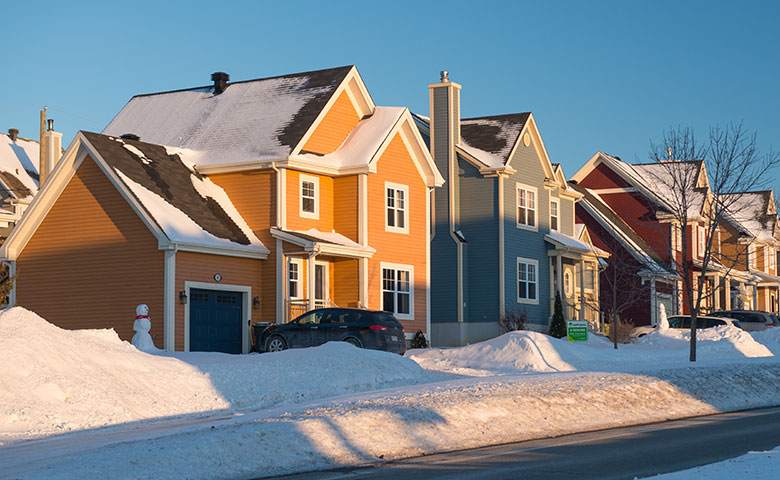Section 2 – Individuals and Families
Home Assistance
Various tax credits and home assistance programs are available for seniors and persons with disabilities, including the new multigenerational home renovation tax credit (see Section IV).
Tax credit for the upgrading of residential waste water treatment systems – Quebec
A refundable tax credit is offered for expenses paid by an individual no later than December 31, 2027 for work to upgrade residential waste water treatment systems. The credit is equal to 20% of the portion of eligible expenditures that exceed $2,500 but are not more than $30,000 (for a total maximum tax credit of $5,500) per eligible dwelling. Generally, work recognized for the purposes of this credit relates to the construction, renovation, modification or rebuilding of a system for the discharge, collection and disposal of waste water, toilet effluents or grey water. Eligible work must be carried out by a contractor under the terms of an agreement entered into after March 31, 2017 but before April 1, 2027.
First-time Home Buyer Credit
An individual who acquires his/her first home to use as a principal residence is entitled to a non-refundable tax credit of 15% for federal and 14% for Quebec purposes of $10,000 (maximum credit of $1,500 for federal purposes and $1,400 for Quebec purposes).
An individual is considered to have purchased his/her first home if neither he/she nor his/her spouse owned and occupied another dwelling during the year of the purchase or the four preceding calendar years.
The credit may also be claimed in respect of certain dwellings acquired by an individual who is entitled to the disability credit or for the benefit of a person who is related to an individual who is entitles to this credit. In these circumstances, it is not necessary for the dwelling to be the purchaser’ first home but, acquisition of the home must make it possible for the disabled person to live in an accessible home or in an environment that is better suited to the person’s personal needs and care. Additionally, the home must be acquired with the intention that it will be the disabled person’s primary residence in the year following the acquisition.
Home Buyer’s Plan
The HBP allows a taxpayer and his/her spouse to borrow, without any tax consequences, up to $35,000 from each of their RRSPs to purchase a home in which they are going to live. A number of conditions must be met, including:
- The taxpayer must be the buyer of a first home, that is neither the taxpayer nor his/her spouse have owned a home they used as a principal residence during the year of the withdrawal (except for the period ending 31 days before the date of the withdrawal) or the four preceding calendar years.
Example : A taxpayer wants to make an HBP withdrawal on March 31, 2024. He/she must not have owned a home from January 1, 2020 to February 28, 2024
- When the amount is withdrawn, the taxpayer must have entered into a written agreement to buy or build a home that he/she intends to use as a principal residence.
- The taxpayer must make annual repayments of the amount borrowed over a period of not more than 15 years. Any unpaid amount for a particular year, will be included in his/her income for the year. Each year, taxpayers who participate in the HBP receive a statement from the CRA showing repayments to date as well as the amount that has to be repaid the following year.
Contributions to the taxpayer’s RRSP or the RRSP of his/her spouse during the 89-day period preceding the withdrawal may not be deductible.
A taxpayer can make use of the HBP in a given year for a second time if, in the preceding year, he/she repaid the total HBP withdrawal previously made and he/she meets all the conditions required to be eligible once again.
Special rules are provided for disabled individuals and situations where the taxpayer who used the HBP turns 72, dies or leaves Canada.
Breakdown of the marriage or common-law partnership
The HBP rules are eased for spouses who separate, to allow them to use the HBP to buy out the former spouse’s share in the residence or a new residence. Thus, a taxpayer is considered to buy a first home if the following conditions are satisfied:18
- At the time of the withdrawal, the taxpayer and his/her spouse have been living separately for at least 90 days;
- The withdrawal is made in the year of the separation or in the next four calendar years;
- Either the principal residence is sold no later than two years after the end of the year in which the withdrawal is made or the taxpayer purchases the former spouse’s share in the home no earlier than 30 days before making the withdrawal and no later than September 30 of the year following the withdrawal;
- If the HBP has been used, the amount must be repaid in full.
Tax-Free First Home Savings Account (FHSA)
Introduced on April 1, 2023, the FHSA is intended to help individuals save for the purchase of their first home located in Canada. To open an FHSA, a taxpayer must meet the following conditions:
- Resides in Canada
- Is at least 18 years of age
- Be a first-time home buyer, i.e., in the year the account is opened and in the four preceding calendar years, the taxpayer must not have lived in a home that he/she or his/her spouse owned (or co-owned) as a principal place of residence).
Only FHSA holders can contribute to their plan and FHSA contributions paid into the plan during the calendar year are deductible for this year20, to an annual limit of $8,000 ($40,000 lifetime). The deduction can be claimed in the year the contribution is paid or in a subsequent year. Once the account is open, any contribution room that is not used in a year is carried forward to the next year, up to a maximum of $8,000. Any FHSA over contribution is subject to a penalty of 1% per month.
Example: In 2023, Mark contributed $5,000 to an FHSA. In 2024, Mark would be allowed to make a $11,000 contribution to his FHSA ($8,000 + [$8,000 – $5,000]).
Similar to other current registered plans (TFSA, RRSP, etc.), income earnings in an FHSA are not taxable. Additionally, eligible withdrawals to make a qualifying first home purchase are not taxable (one property lifetime).
Individuals can transfer funds from an RRSP to a FHSA tax-free (up to their annual and lifetime contribution limits)21, and they can benefit from both the FHSA and the HBP for the purchase of the same qualifying home.
In general. the FHSA must be closed at the end of the year following that of the first withdrawal or 15 years after it is opened. When the plan is closed, this individual must either pay tax on the funds or transfer them to an RRSP or a RRIF. These transfers do not reduce or are not limited by the individual’s RRSP contribution limit.
Exemption – Principal Residence
The capital gain on a principal residence is not taxable provided the taxpayer designates it as his/her principal residence in his/her income tax return. Only one property may be designated as a principal residence for a year per family. A number of family residences may be eligible for the exemption even if they are only used on weekends, e.g., cottages or secondary residences in Canada or elsewhere.
Special rules apply when the taxpayer starts to rent all or part of his/her residence.
Quick sale of real property (flip)
As of 2023, profit from the disposition of a principal residence (or a contract for the purchase and sale of such a residence) owned by the taxpayer for less than one year is deemed to be income from a business.22 Accordingly, the gain on the sale does not qualify for the principal residence exemption and is fully taxable instead of 50%, as is the case for a capital gain.
This presumption does not apply where the sale of the property results from any of the following events: death, addition to the household, separation, personal security (e.g., domestic violence), disability or serious illness, change of employment,23 job loss, insolvency or involuntary disposition (e.g., expropriation or disaster).
18 All the other conditions of the HBP rules must have been met to be eligible. Special attention is required when the individual has a new spouse at the time of the withdrawal. 19 This must be the spouse or common-law spouse at the time the account is opened. 20 Unlike RRSPs, it is not possible to contribute to your spouse's FHSA on the basis of the taxpayer’s own contribution room, and contributions made in the first 60 days of the following year are deductible in that following year. 21These transfers do not restore the individual's RRSP contribution limit but reduce FHSA contribution room and no deduction is allowed for a FHSA contribution on such a transfer. 22 This presumption will apply to any residential real estate, such that a rental property could therefore be included (see Section VII). 23The move should allow the taxpayer to be at least 40 kilometers closer to his new place of work.
This document is up to date as of August 31, 2023 and reflects the status of legislation, including proposed amendments at this date.






